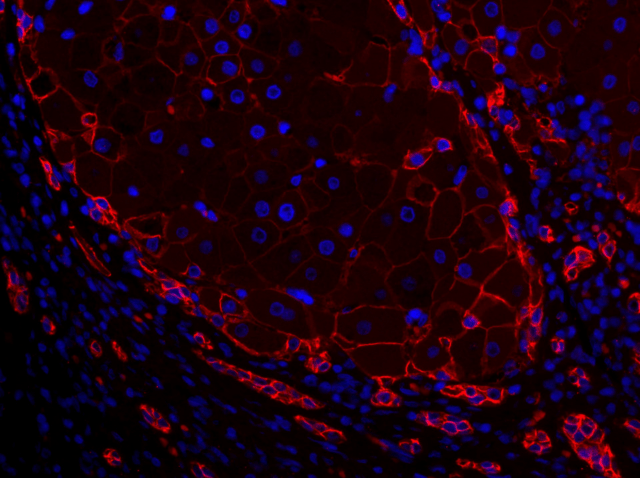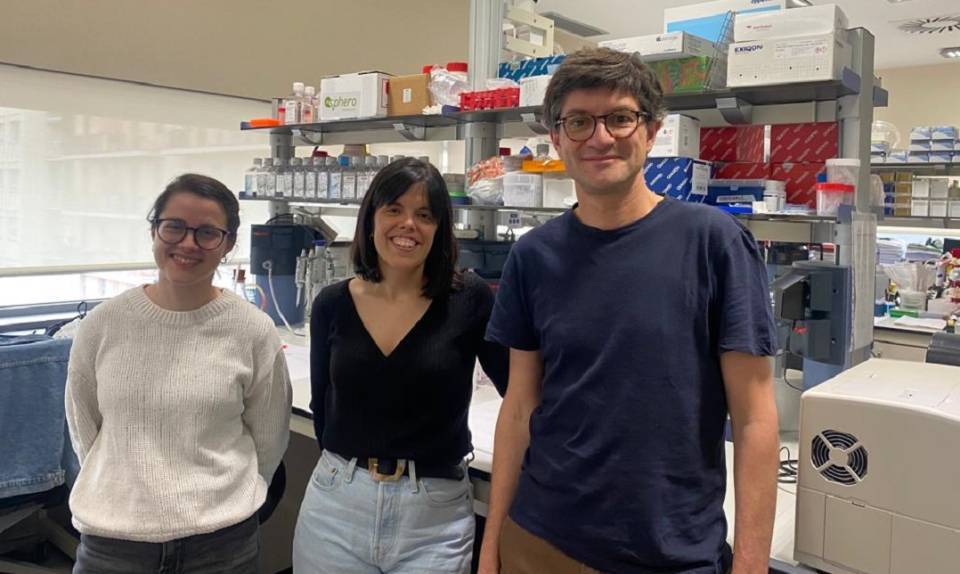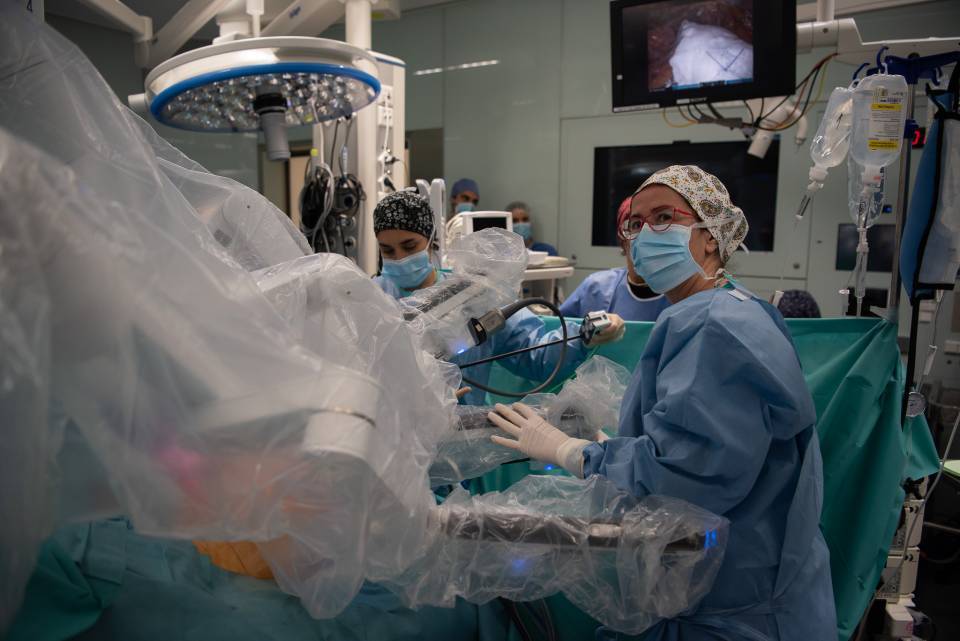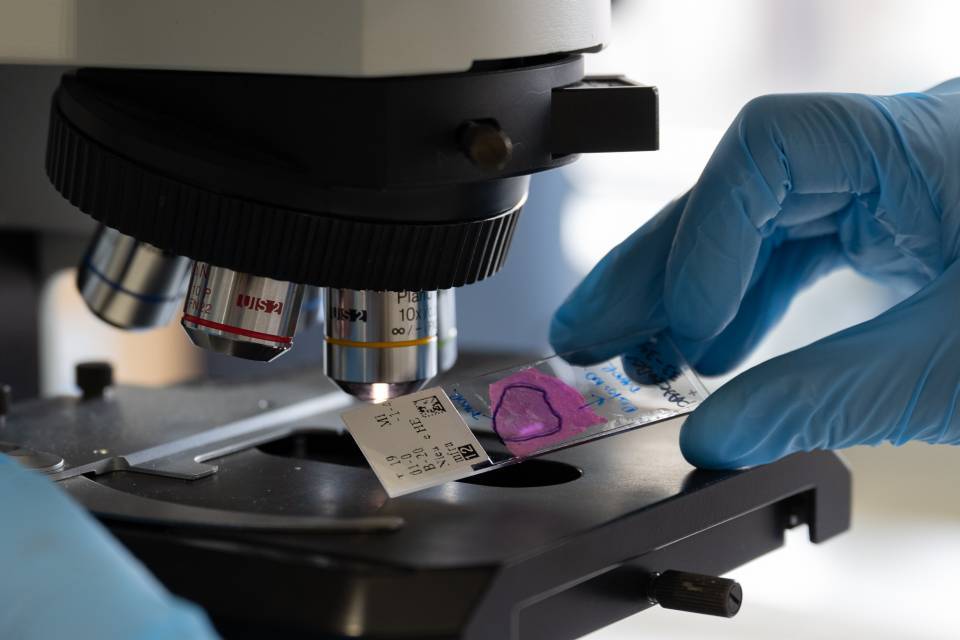The loss of identity of liver cells is associated with the deterioration of liver function in alcohol-related hepatitis. In this context, the liver cells undergo a process called dedifferentiation; that is, they regress to a more immature state and become hepatobiliary cells. Now, a study led by Pau Sancho-Bru, head of the IDIBAPS group Plasticity and tissue repair in liver disease, and his team have identified the mechanisms responsible for this phenomenon.
The study, which was published in the Journal of Hepatology, evaluates the levels of expression of the genes of hepatobiliary cells. “Until now, studying dedifferentiation meant analyzing samples of liver tissue under the microscope. The results showed a diverse and heterogeneous population of cells, which presented characteristics of liver cells but also of biliary cells”, explains Sancho-Bru. “We went a step further and sequenced the RNA of these cells, obtained by microdissection using laser capture. This technique makes it possible to isolate specific cells of interest from microscopic regions of tissue, in our case the liver of patients with alcoholic hepatitis”.
According to the bioinformatic analysis of the sequencing data, the CXCR4 receptor may play a key role in the dedifferentiation of liver cells. “It appears that there is a link between the increased levels of expression of CXCR4 and the loss of identity of the liver cells and the exacerbation of the alcoholic hepatitis”, says Beatriz Aguilar-Bravo, a researcher in Sancho-Bru’s group and lead author of the study. “In order to confirm this hypothesis, we simulated the process of dedifferentiation in vitro using organoids derived from samples from patients with the disease. In these three-dimensional cell cultures that reproduce the characteristics of real tissue, we observed that, indeed, the expression of CXCR4 increased, whereas the typical markers for liver cells decreased, showing the loss of identity”.

Furthermore, in the mouse model of liver disease, overexpression of CXCR4 induces dedifferentiation of liver cells and causes liver damage. On the other hand, inhibition attenuates the loss of liver cells and stops the progression of liver damage. “Altogether, it indicates that the CXCR4 pathway may be a therapeutic target for preventing dedifferentiation of liver cells. Moreover, the finding highlights the importance of controlling processes of cell plasticity, through which cells can take on different identities in chronic hepatitis”, concludes Sancho-Bru.
The study received funding from the Carlos III Institute of Health, the European Foundation for Alcohol Research, the Agency for the Management of University and Research Grants (AGAUR), and the National Institute on Alcohol Abuse and Alcoholism.
Reference article
Aguilar-Bravo B, Ariño S, Blaya D, Pose E, Martinez García de la Torre RA, Latasa MU, Martínez-Sánchez C, Zanatto L, Sererols-Viñas L, Cantallops-Vilà P, Affo S, Coll M, Thillen X, Dubuquoy L, Avila MA, Argemi J, Paz AL, Nevzorova YA, Cubero FJ, Bataller R, Lozano JJ, Ginès P, Mathurin P, Sancho-Bru P. Hepatocyte dedifferentiation profiling in alcohol-related liver disease identifies CXCR4 as a driver of cell reprogramming. J Hepatol. 2023 Apr 21:S0168-8278(23)00236-2. doi: 10.1016/j.jhep.2023.04.013.




